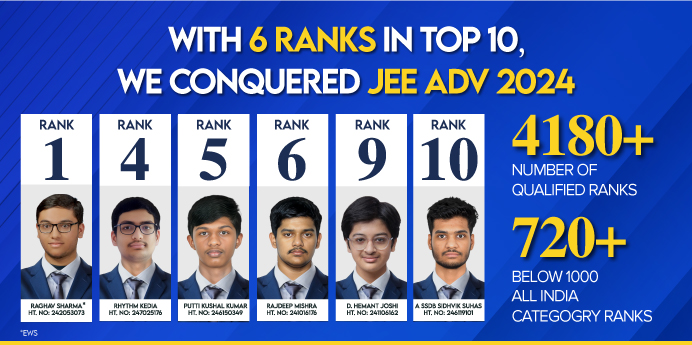










Courses

By Swati Singh
|
Updated on 4 Aug 2025, 17:48 IST
Child Labour Paragraph: Child labour is the employment of children below the age of 14 years in any industry or business. Child labour is an illegal act and has been a big social issue in India for years. It is considered as exploitative for the future of children and country. Any type of job performed by the children in industries is difficult and demanding as well as more hazardous and morally reprehensible for them. Children have to perform a wide range of tasks and activities even after being of small age and low capacity.
We have provided below various short paragraphs on child labor under different words limit for the students. We hope following child labour paragraphs will surely help students in completing their tasks in school. It will also help small kids and children to write or recite paragraphs in simple words and small sentences. Students can select any paragraph on child labour according to their need and requirement:
This article provides both long and short paragraphs on Child Labour, highlighting its causes, consequences, and the urgent need to stop this social evil.
Child labour is an illegal act performed by the children in their little age by the involvement of some industrialists and businessmen all over India. Industrialists and businessmen generally chose child labour because of the efficient work in minimum time at low cost. And, children generally get involved in child labour because of their poverty and lack of education. People, who are very poor and cannot manage their two times food and clothes, become forced to send their kids and children to do some job at lowest payment instead of sending them to the school for education.
According to the survey of 2001, it was found that approximately 90 percent of the children were involved in productive activities as a supplement to their family income (23.8%) or improving their family income (66%). Tasks or activities, which are not involved in affecting the health and personal development of children or interfering in their schooling, cannot be counted as child labour. They can be taken as positive and no need to be eliminated. However, all those activities, affecting a child in all aspects (health, personal development, schooling, etc), are needed to be eliminated.
Generally, middle class children get involved in some simple house tasks and activities which help their parents in daily routine without affecting children’s health and schooling. Such activities at home are considered to be necessary for children. However, all the activities that affect children’s health, development and schooling, come under child labour. Child labour involves some hard tasks performed by children below the age group of 14 years at very low payment. Child labour is needed by some Industrialists and businessmen in the country who want efficient work at low minimum cost.
Child labour is also the need of poor people (living below the poverty line), who fail to manage two times food for them, send their kids and children to do some job even at very low cost. Such activities should be blocked urgently by the government by supporting the poor people. They should be motivated to send their kids to school and get proper education. It is needed to take some positive steps by both, government and well doing citizens to help poor people and their kids to be productive members of the Indian society in their adult life.
Child labour is the illegal act which forces children to be away from of their normal childhood, their schooling, their normal growth and development. Child labour is a big social issue; it is destroying the nation’s future by harming the physical and mental development of its future leaders. It is very dangerous for children in all aspects such as mentally, physically, socially, and morally. It interferes with the schooling of children, deprives their opportunity to attend school, forces them to leave school prematurely, forces them to perform tasks of long hours and heavy work, etc.

Child labour has enslaved the life of children, separated them from their childhood, education and families, exposed them to serious hazards, illnesses, diseases and many more harms at a very early age. A big percentage of children are involved in child labour in the field of agriculture, and other involved fields are fishing, mining and quarrying, construction, manufacturing, restaurants and hotels, storage, transport, communications, insurance, finance, real-estate, business services and many more. It has been spread all over the country like a disease and poison which needed to be out off this to save the present of children and future of country.
Child labour is the illegal act running in India for many years and ruining the present and future of the children. It has taken many different forms and has been an urgent priority to be eliminated from the society without any delay. Child labour has been a deep rooted social issue which in turn has given rise to other social issues such as sale and trafficking of children, debt bondage, serfdom, forced labour at low cost, etc. Some other acts involved are children are hired for prostitution, pornography, production and trafficking of drugs, etc. All such activities are harming the children’s health, development, safety and morals. All the activities, which put at risk the physical, mental and moral well-being of a child, come under the category of hazardous work.

JEE

NEET

Foundation JEE

Foundation NEET

CBSE
According to the Constitution of India, children below the age group of 14 years are completely prohibited to be involved in factory, mine or other hazardous employment in anyways. They (children of 6-14 years) should be provided free and compulsory education by the state government. They should not be abused and forced by economic necessity. They should be given full opportunities and all the required facilities to develop in healthy manner. In-spite-of all these rules and regulations, there are many industries and businesses which are using child labour.
Child labour is the harmful act to the children below 14 years of age. Despite of various rules and regulations by the Indian government, child labour is still practiced. Under development goals and strategies of India, a policy was adopted named National Child Labour Policy in 1987. Later, a Child Labour (Prohibition and Regulation) Act was adopted in 1986. The national policy reiterates the directive principle of state policy in India’s Constitution. Both were adopted as the general development programmes in order to benefit the children of age group 6-14 years.
Another programme, National Child Labour Projects (NCLPs), was established by the Ministry of Labour and Employment at national level to rehabilitate the children working in hazardous occupations since 1988. According to this programme, some basic facilities are given to the children such as conducting surveys, evaluating percentage of child labour, opening special schools, pre-vocational skills training, generating employment opportunities, raising public awareness, etc. Aroun
One hundred NCLPs have been launched all over the country regarding rehabilitation of children working in hazardous industries (glass, bangles, locks, brassware, slate tiles, carpets, fireworks, matches, gems, etc).

Child labor is a harmful act involves the children of below 14 years of age group. It harms the children to a great extent and keeps them away from attending regular school. The percentage of child labour is increasing all around the world because of increasing gap between rich and poor people. According to the research, it is found that around millions of young children were involved in illegal work by leaving their school in the recent decades.
According to the International Labor Organization, it is found that around 215 million children (age group 5-17 years) are working in the hazardous and extremely exploitative field as they belong to the extremely poor family. Most of the children are involved in the child labour in the fields like commercial agriculture, manufacturing, mining, fishing, production, domestic service, drug trade, prostitution, traumatic activities (serving as soldiers), etc. Child labour is very harmful as it involves in threatening the physical, mental, and emotional well-being of children, child slavery, debt bondage, forced labor, child trafficking, prohibit schooling, etc. It is recorded that, approximately 114 million (53%) child laborers are in Asia and the Pacific, 65 million (30%) child laborers in sub-Saharan Africa and 14 million (7%) child laborers in Latin America are found.
Children are considered as the future of nation. So, they should be protected a lot from any hazardous. They should be given proper care and love, time to live their childhood, getting education, and other things according to their rights. They should carry books in their hands and not bricks. They should play with toys and other indoor or outdoor games like footballs, cricket, etc. They should go to the school and not to the mines or industries.
Various NGOs are working in this field to ensure that all the Indian children are getting their basic rights guaranteed by the United Nations Charter of Child Rights, 1992. Basic rights are: right to survival, right to protection, right to development, and right to participation. Some of the industries using child labour are textiles, hand-knotted carpets, silk, construction, glass, footwear, brassware, production, gemstone polishing, fireworks, etc. Child labour is generally preferred by the industrialist and businessmen as they get efficient work at low cost. 30th of April is celebrated as Anti-Child Labour Day all over India in order to spread awareness among people against child labour.
Child labor is the involvement of little children into hard activities at low labour cost. It persists for years and even increasing despite of laws and standards by the government to eliminate it. There are various causes of child labour however global child labor causes are almost similar. Some of the main reasons of child labour are like poverty, illiterate parents, limited access of children to education, and repression of child rights. Poverty and unemployment of adults are causing their children to get involved in some kind of work in little age at low cost. There is a huge gap between poor and rich people. So, the children of poor people do not get access to the free education and require facilities.
There are huge violations in accepting the existing laws or codes of conduct against child labour. Laws and enforcement against child labour are inadequate which allow children to involve in some kind of labor. At some places, child rights are repressed.
Child labour is the employment of children in any type of work. It keeps children away from the childhood and interferes with their schooling. It is dangerous and harmful to all the children (below age group of 14 years) in the aspects like physically, mentally, and socially or morally. It is an exploitative act performed by many industries for their own benefits. There are various rules and regulations prohibiting child labour however not getting followed properly by the people. Child labour is generally used in the field of agriculture, factories, mining and other home-based assembly operations.
In various developing countries, the main reasons (primary causes) of child labour are high poverty level and poor schooling opportunities in front of the poor children. According to the statistics of 2010, the highest incidence rates of child labour was in sub-saharan Africa. It was witnessed by some African nations that around 50% children between ages 5-14 years are working. Child labour is generally used in rural areas and informal urban economy by their parents or owner of factories.
Child labour is the practice of involving children below age 14 years in some economic activities as part time or full time. This practice is very harmful to the physical and mental development of the children. It keeps them away from the happy childhood and good memories with parents. Some of the primary causes of child labour are poverty, lack of facilities for proper schooling, growth of informal economy, etc. According to the national census of 1998, child labour had involved around 12.6 million children aged 4-15 years (total child population of age group 5-14 years was 253 million).
However, it was reduced to 4.98 million children in the nationwide survey of 2009-2010. According to the national census of 2011, total number of children involved in child labour (aged 5-14) was 4.35 million. Child labour is not a national problem only; it is a worldwide issue being hazardous day by day. Involving children (between age group 4-14 years) in any hazardous industries is a criminal offense, despite; it is very hard to eliminate it from the society.
Child labour is a major social problem. It refers to the employment of children in any work in exchange for which they are given wages. Depriving children of their childhood, child labour interferes with their ability to attend regular school. Dangerous and harmful in mental, physical, social and moral terms, child labour is illegal in every country including India. It is a major socio-economic problem that has a negative impact on a child’s growth, formation of thoughts and attitude, and the ability to gain maturity. Child labour is a blot or curse which has laid its stranglehold across the country in such a way that despite the efforts of the administration, the practice of child labour is still prevalent in society.
There are many reasons for the continuing problem of child labour; these include the domestic use of children in others’ houses, shops, over population, illiteracy, poverty, debt trap etc.
According to UNICEF children are employed because they can be easily exploited. By considering various causes of child labour, we can make a strategy to curb or eliminate child labour.
Child labour in India is a curse which will never let our society become free from injustice. Today, we find many such instances where children are doing labour by sacrificing their childhood. We should discuss among ourselves about preventing child labour. We should tell other people too about the ways to prevent child labour. We should discuss child labour and child exploitation awareness among people.
Despite the efforts of government and non-governmental institutions (NGOs), there is little decrease in the practice of child labour in our country. Nevertheless, the government has enforced strict laws to prohibit child labour. Let’s know about these regulations:
No courses found
Yes, child labour is governed by acts, like the Child Labour (Prohibition and Regulation) Act, 1986 in India.
Yes, but there are restrictions on the type of work and working hours for those under 18.
Yes, employing children in certain types of work or hazardous conditions is a crime in many countries.
By enforcing laws, raising awareness, and supporting education for all children.
India has made strides, but child labour still exists, often in informal sectors.
Typically, anyone under the age of 14 to 18, depending on the country's regulations.
Poverty, lack of education, and economic necessity are primary causes.
It refers to the exploitation of children through any form of work.